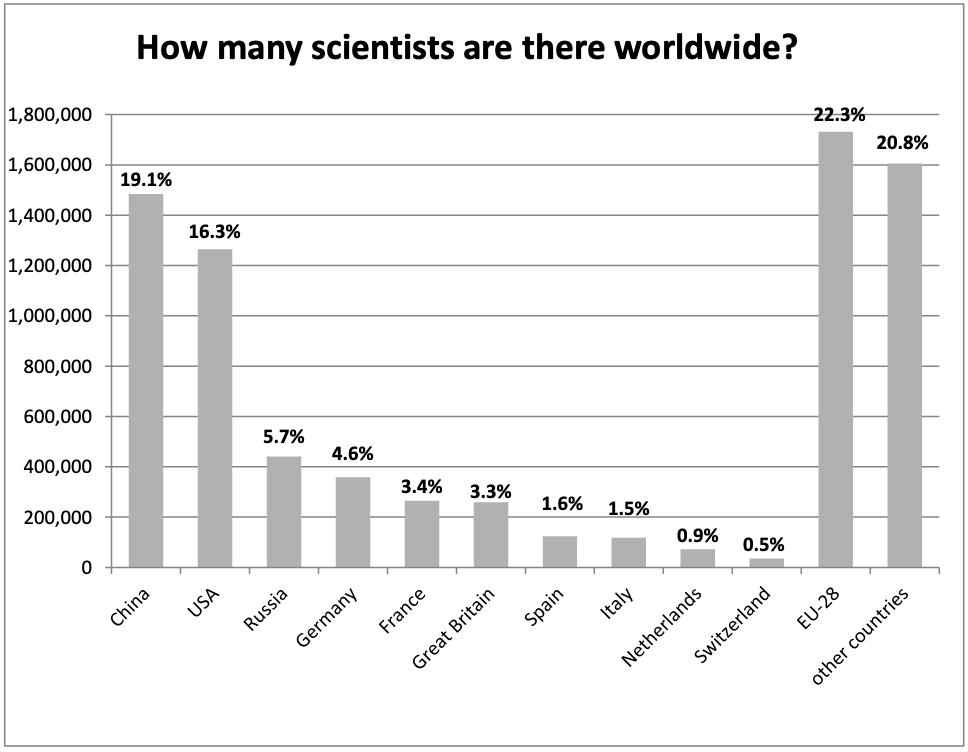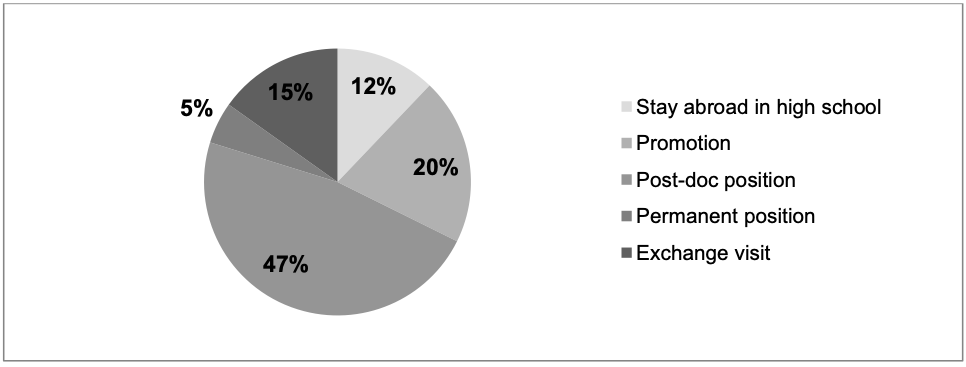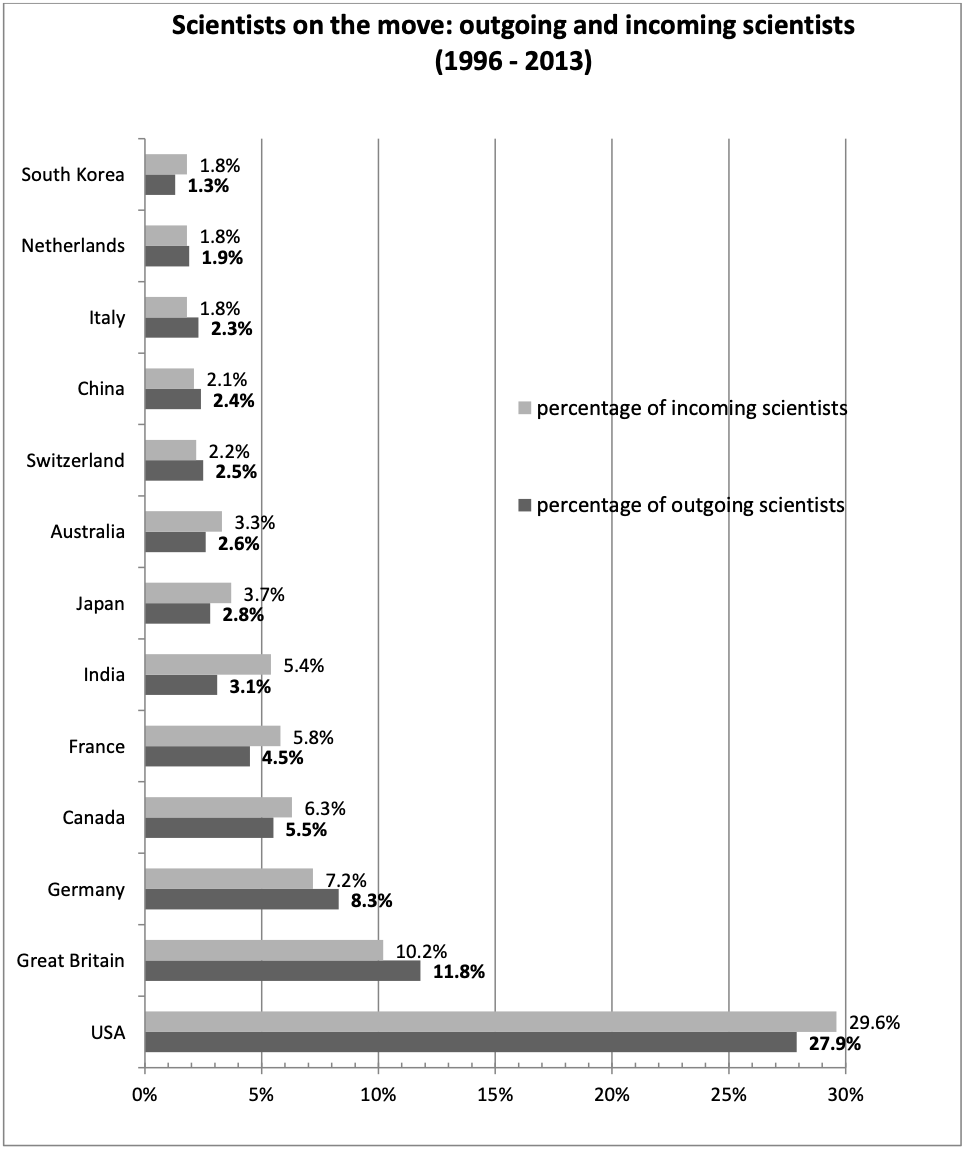Table of Contents
Gender and Mobility: Insights into the field of Physics
1. Facts and figures
A common understanding of terms such as gender and mobility is mandatory in this GMAP. Therefore, definitions are determined and distinguished. They are based on the interview results.1) Additionally, several figures related to the state of the art on scientists' mobility in Europe 2) in general are given. They show how significant international mobility was in the past and still is today.
Key definitions
Scientists literally create knowledge and new findings. As part of their research, they develop or improve concepts, theories, models, instruments or methods. 3) Compared to the term researcher, a scientist is a person with advanced knowledge of one or more sciences. Basically, a researcher becomes a scientist after having advanced knowledge and experiences in the scientific research.
For the purpose of this study the group of young scientists refers to doctoral students and post-docs within the early post-doctoral phase. The early post-doctoral phase comprises scientists in the first three years after the PhD. Senior scientists consists of postgraduates in between three to nine years after their PhD as well as the young investigators group leaders. Senior scientists include professors.4)
Personal development is defined as the acquisition of knowledge, qualifications, and experiences to foster one's individual effort and self-assessment. Furthermore, personal development is initiated by the person herself/himself. It is the opposite of the employee's development, which is initiated by an organization. 5)
Career development is defined as “the process of learning and improving your skills so that you can do your job better and progress to better jobs” 6). This process begins with a proactive planning and implementation of action steps towards set career goals. 7) In some cases a mentor or supervisor can be helpful for career development.
On the one hand, mobility is defined as the quality or state of being mobile. It is the movement of individuals or groups from place to place, job to job (or from one social or economic level to another). On the other hand, it seems to be impossible to give a clear definition of the term mobility, as it differs according to international interpretations.
As we are interested in the mobility behaviour in the field of physics, we defined mobility in relation to academia and research in mobility experiences abroad. There are basically transfers or people movements between countries, e.g. international circulation of a country's intellectual resources, globalisation of science impact on actual need for physical mobility. It is about being in a country other than one's own (defined usually by country of birth). This means that we only focus on international mobility. It includes all kinds of movement from outside into and out of an organization. One of them is geographical mobility which is seen as a requirement, e.g. spending some time at CERN. It includes international dimensions, outgoing and incoming mobility as well as the reintegration of returnees. Programs for outgoing scientists foster the accumulation of knowledge and good practices abroad. Outgoing mobility's aim is to attract best scientists to improve research activities and strengthen the national community's position.
“Mobility - and in particular international mobility - of skilled human resources plays an important role in innovation. It contributes to the creation and diffusion of knowledge, particularly tacit knowledge, which is more effectively shared within a common social and geographical context. Coherent and efficient migration regimes help making the most of brain circulation.” 8)
State of the art on scientists' mobility in Europe
The European Commission fosters mobility through various projects and programmes 9) and encourages students and scientists to go abroad. Studies 10) have shown that mobility is one of the most crucial factors in academia and research. Several programs help scientists to accumulate knowledge and good practices abroad. The international mobility of scientists is about the movement of highly skilled scientists, the movement of highly skilled knowledge workers. There are three well-known types of movement:
'Brain drain' describes the potential loss of human capital and knowledge from the source (home country) when scientists go abroad for their research. It can result in long-term absence of the scientist or permanent emigration. The positive aspect of this emigration is the increase of knowledge and human capital in the host country - what one country loses another gain. This phenomenon is called
'brain gain' for the hosting or receiving country. A third aspect of international mobility is 'brain circulation'. Highly skilled scientists visit different countries for a defined period of time and then return to their home country. Science and host countries benefit when scientists maintain contacts made during international stays and networks 11) of knowledge and research are expanded.
Based on different studies, the following section provides some figures for the state of the art of scientists' mobility in Europe.
 Figure 1: Scientists in research locations in 2013 12)
Figure 1: Scientists in research locations in 2013 12)
Figure 1 provides an overview on scientists worldwide - not specific to physics. This cut-out gives information on selected countries, with leading research organizations. The largest number of scientists is in China with circa 1.5 million scientists, followed by the USA. The total number of scientists 13) worldwide is approximately 7.8 million.
There are different reasons behind the initial mobility abroad by academics and scientists. It may start with a stay abroad in high school and may end with a permanent position. Figure 2 shows that almost half of the total go abroad to take up a post-doc position. This may be a reason for the high number of young scientists who go abroad.
 Figure 2: Reasons for first international mobility
Figure 2: Reasons for first international mobility
In comparison to all countries analysed it can be said that the number of scientists in the ERA is particularly high. This means that within Europe there are many of scientists who are able to go abroad.
The comparison between outgoing and incoming mobility shows that particularly the United States of America are very active in the exchange of scientists. Generally outgoing and incoming mobility are almost equal. 14)
 Figure 3: Outgoing and incoming scientists (1996-2013) 15)
Figure 3: Outgoing and incoming scientists (1996-2013) 15)





